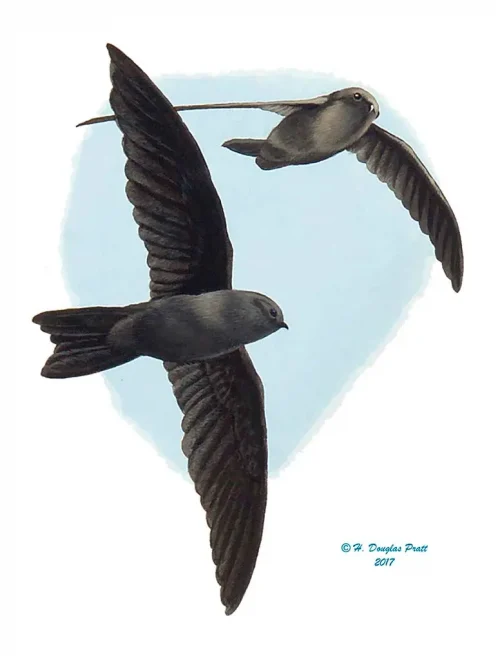Mariana Gray Swiftlet

Yǻyaguak: Endangered species
Scientific Name: Collocali. bartschi (Family APODIDAE)
Common Name: Mariana Gray Swiftlet
CHamoru Name: Yǻyaguak
Audio sample of the Yǻyaguak
Habitat and Natural History: These birds live in limestone caves and sink holes in limestone and ravine forests. Their nests are constructed of moss are fastened to the roofs of caves with saliva. As an aerial feeder, it uses echolocation to capture flying insects. It eats flies, winged ants and termites.
Description: Small body, narrow winged. Dark gray above body, brownish gray below. It lays a single egg sometime between January and July. The chick is tended for about 35 days before fledging. It is not known whether both parents tend the chicks.
Range: Historically, the Island Grey Swiftlet was found on Guam and the Northern Mariana islands of Rota, Aguigan and Saipan. The Rota population inexplicably disappeared after World War II. The subspecies is endemic to the Mariana Islands. On Guam it is restricted to several caves in the south.
Current Status: Yåyaguak are one of the few forest birds left on Guam. They are restricted to caves in southern Guam. Presently, there are an estimated 6,500 birds spread throughout 17 caves on Guam, Saipan, and Aguigan (Vogt, Williams 2018). Although they were historically found on Rota, today there are no yåyaguak on the island. In an effort to save these birds from extinction, yåyaguak from Guam were translocated to the island of Oʻahu, Hawaiʻi to Halawa Valley. Today, this population remains small, but sustaining. Because yåyaguak are still found in the wild, there is no captive-breeding program for the species.
Threats: The main threat is predation by the brown treesnake.
